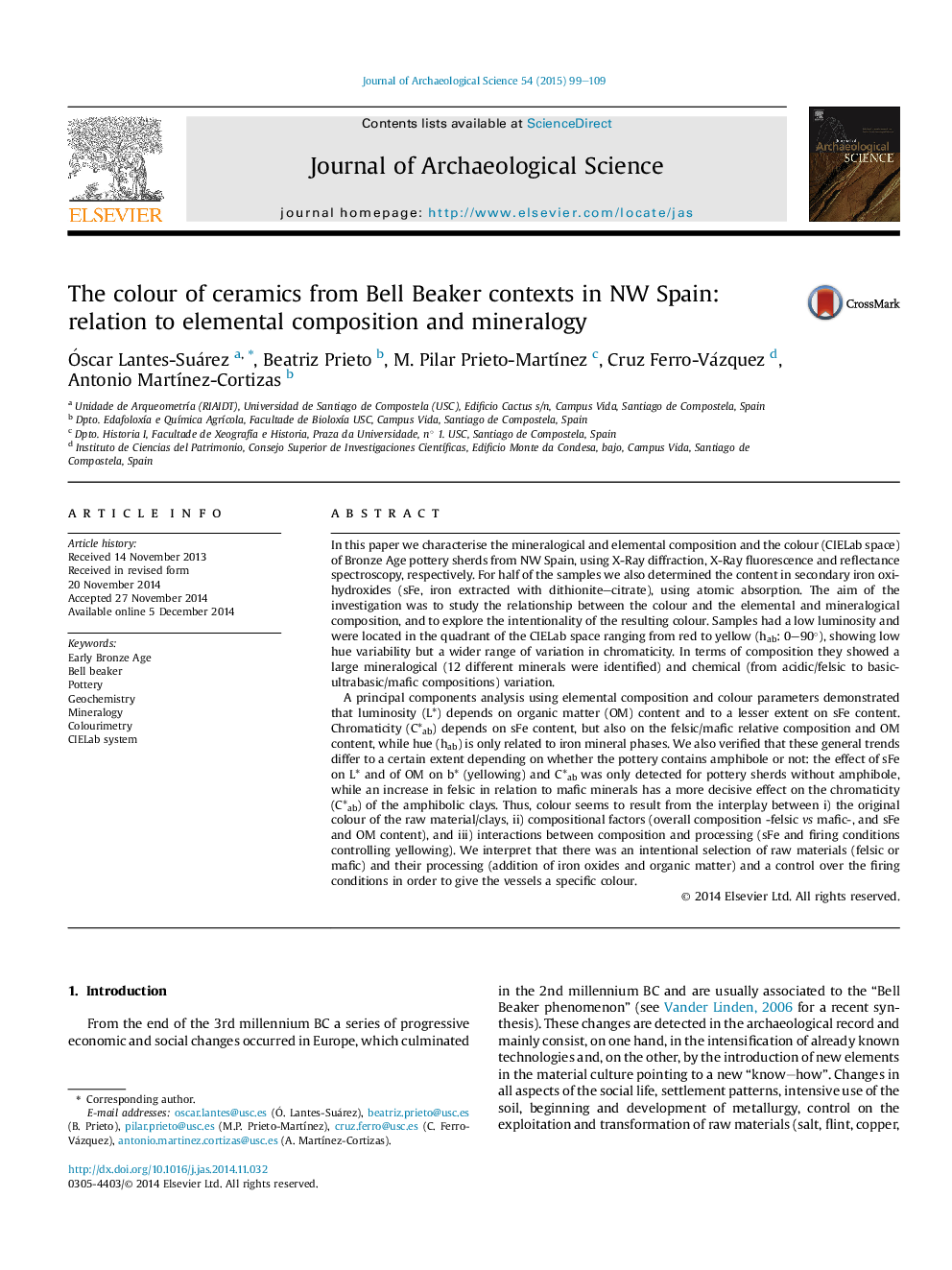| Article ID | Journal | Published Year | Pages | File Type |
|---|---|---|---|---|
| 7442309 | Journal of Archaeological Science | 2015 | 11 Pages |
Abstract
A principal components analysis using elemental composition and colour parameters demonstrated that luminosity (L*) depends on organic matter (OM) content and to a lesser extent on sFe content. Chromaticity (C*ab) depends on sFe content, but also on the felsic/mafic relative composition and OM content, while hue (hab) is only related to iron mineral phases. We also verified that these general trends differ to a certain extent depending on whether the pottery contains amphibole or not: the effect of sFe on L* and of OM on b* (yellowing) and C*ab was only detected for pottery sherds without amphibole, while an increase in felsic in relation to mafic minerals has a more decisive effect on the chromaticity (C*ab) of the amphibolic clays. Thus, colour seems to result from the interplay between i) the original colour of the raw material/clays, ii) compositional factors (overall composition -felsic vs mafic-, and sFe and OM content), and iii) interactions between composition and processing (sFe and firing conditions controlling yellowing). We interpret that there was an intentional selection of raw materials (felsic or mafic) and their processing (addition of iron oxides and organic matter) and a control over the firing conditions in order to give the vessels a specific colour.
Related Topics
Physical Sciences and Engineering
Materials Science
Materials Science (General)
Authors
Ãscar Lantes-Suárez, Beatriz Prieto, M. Pilar Prieto-MartÃnez, Cruz Ferro-Vázquez, Antonio MartÃnez-Cortizas,
